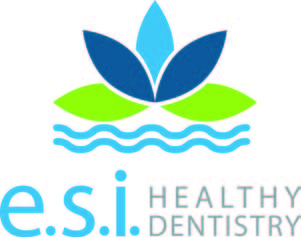As you are reading this, chances are that you have at least one amalgam filling in your mouth. Dental amalgam alloy is a mixture of liquid (elemental) mercury and a powdered alloy composed of silver, tin, and copper. Yum! It was invented over a century ago and it was ingenious at the time as it required little skill, was inexpensive, it could tolerate the moisture in the mouth, it was long lasting and it killed bacteria. But what about the effects on patients?
Let’s talk safety. The FDA (Food and Drug Administration) and ADA (American Dental Association) say that amalgam is safe for patients including children. Yet the EPA (Environmental Protection Agency) states that amalgam waste needs to be properly collected, separated and it’s disposal is highly regulated, not to mention expensive. It makes one wonder how is it unsafe for the environment where we are not allowed to throw it in the garbage or flush it down the drain, but is safe to put in someone’s mouth? It is also interesting that it is illegal to use mercury fillings in more than 20 European countries.
It makes me nervous to introduce mercury to a growing individual or a pregnant woman. Mercury is arguably the element that is the most potent neurotoxin. When ingested it causes anxiety, chest pain, insomnia, numbness, tremors, hearing impairment, impaired speech, chronic fatigue, early onset Alzheimer’s, and is a trigger to multiple autoimmune diseases.
When I was in dental school more than 20 years ago we were taught that patients (and dentists) are exposed to mercury only when we placed these fillings or when we remove them. When they are simply in the mouth, the mercury is “locked in” and is inactive. Recent studies show that mercury vapors are released with extreme temperatures and with friction during eating.
Some people have a mouthful of these metal fillings and exhibit little obvious symptoms, yet others are so sensitive that even a small filling can throw their whole central nervous system off. The dilemma is if someone has 10 of these fillings and they have neurological symptoms will they benefit from removing and replacing them? Do we remove them all at once? How do we protect patients and the dental team? As you can imagine, there are so many factors involved and, as in life, there is no such thing as always or never. If these fillings are compromised they should be replaced.
The protocol involves detoxification and protective barriers. We need to prime the body and the immune system so that we can be ready. A couple of weeks prior to amalgam removal the patient takes bentonite clay, chlorella, spirulina and other supplements including vitamin D and echinacea. We also break up the removal instead of doing 10 at a time, as there is a threshold that our organs can tolerate. During the actual procedure we use a non-latex rubber dam to isolate the teeth involved, and we use a nasal hood with oxygen to protect the patient from mercury fumes. A sophisticated filtration and suction system is used during the process. Activated charcoal and other supplements for detoxification are administered after the procedure.
Although dental amalgam may have been a great material 100 years ago, we have better and more biofriendly materials available today. With advances in biologic and biomimetic dentistry,
 Jimmy Kilimitzoglou, DDS, FACD,
Jimmy Kilimitzoglou, DDS, FACD,
FPFA, DABOI, MAGD, FAAID, FICOI
ESI Healthy Dentistry
42 Terry Road, Smithtown, NY 11787
Tel (631) 979 7991 / Fax (631) 979 7992
dental@esihealthydentistry.com
www.esihealthydentistry.com

















